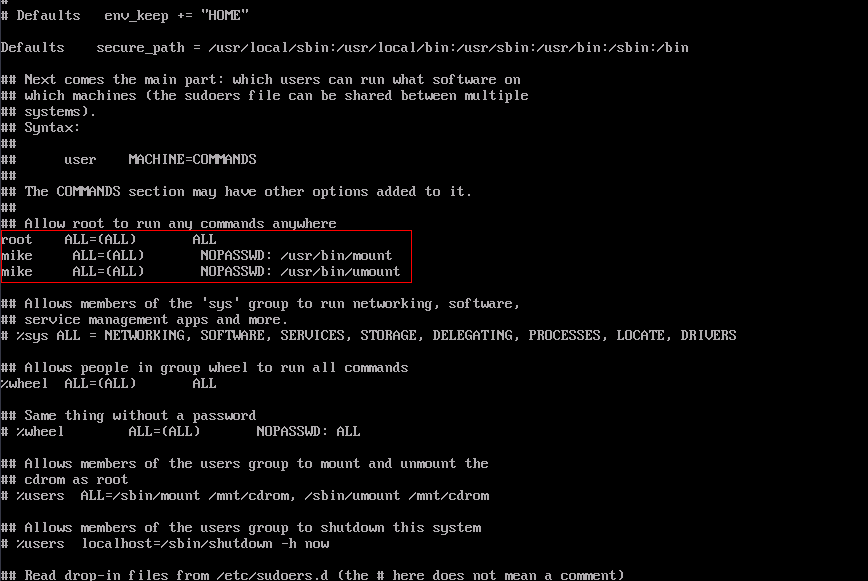Mounting a File System to a Linux ECS as a Non-root User¶
Scenarios¶
By default, a Linux ECS allows only the root user to run the mount command for mounting a file system. However, if the permissions of user root are assigned to other common users, such users can also run the mount command for file system mounting. The following describes how to mount a file system to a Linux ECS as a common user. The EulerOS is used as an example.
Prerequisites¶
A non-root user has been created on the ECS.
A file system has been created and can be mounted to the ECS by the root user.
You have obtained the mount point of the file system.
Procedure¶
Log in to the ECS as user root.
Assign the permissions of user root to the non-root user.
Run the chmod 777 /etc/sudoers command to change the sudoers file to be editable.
Use the which command to view the mount and umount command paths.

Figure 1 Viewing command paths¶
Run the vi /etc/resolv.conf command to edit the sudoers file.
Add a common user under the root account. In the following figure, user Mike is added.

Figure 2 Adding a user¶
Press Esc, input :wq, and press Enter to save and exit.
Run the chmod 440 /etc/sudoers command to change the sudoers file to be read-only.
Log in to the ECS as user Mike.
Run the following command to mount the file system. For details about the mounting parameters, see Table 1.
sudo mount -t nfs -o vers=3,timeo=600,noresvport,nolock Mount point Local path
Table 1 Parameter description¶ Parameter
Description
Mount point
Note
x is a digit or letter.
If the mount point is too long to display completely, you can adjust the column width.
Local path
Local path on the ECS, used to mount the file system, for example, /local_path.
Run the following command to view the mounted file system:
mount -l
If the command output contains the following information, the file system has been mounted.
example.com:/share-xxx on /local_path type nfs (rw,vers=3,timeo=600,nolock,addr=)